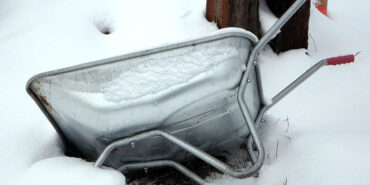How to work safely with power tools?
Power tools are one of the key elements of equipment for employees of the construction industry, automotive, repair companies and many household DIY enthusiasts, enabling you to perform many works without the need for excess force. However, in order for them to fulfill their role and improve everyday work, they should be used in accordance with their intended purpose and accepted health and safety rules. Whether at home or on a construction site, the safety of working with power tools is paramount and without first familiarizing yourself with the rules of operation of a given device, it is not worth taking any action.
Each plant using power tools on a daily basis should include in its internal OHS regulations a separate section dealing with work safety when using various types of tools, distinguishing their types and method of work. Of course, each employee should read the exact instruction manual of each tool before starting its use and be trained by an authorized person at the time of occupying a new workplace with a previously unused power tool.
Among the most important principles of safe work with power tools, applicable both in workplaces and private use, one should mention above all the use of tools only in a state of sobriety, with special care and full focus on the task at hand. When using power tools, always use appropriate protective clothing and accessories, including glasses or goggles, a dust mask, anti-cut gloves, footwear with non-slip soles and additional personal protective equipment that can protect the worker at the time of use of the power tool.
Before connecting each power tool to the power supply, make sure that the device is turned off and start it so that accidental switching on the drive when connected to the power supply is impossible. In the case of many professional devices, safeguards are used today, which should be absolutely blocked after each immobilization of the device and remain in such a state until they are restarted, deliberately started. It is worth remembering that before turning on the power tool, remove from it any setting tools or keys that may interfere with its work and pose an additional threat to the employee.
The need to conduct regular check-ups in the field of the condition and efficiency of power tools is a principle directed mainly towards workplaces operating power tools with much greater frequency than a home DIY. Frequent checking of tools for possible damage and defects avoids the risk of mechanical injuries or even electric shock, which is the main cause of accidents at work in environments using power tools.
To ensure optimal frequency of checking the condition of the equipment, each employee using power tools should be acquainted with the factory instruction manual and know the requirements for control tests, deadlines for their conduct, procedures or basic protection measures to ensure the safety of use of the device. In order to maintain the maximum level of protection in plants using power tools, it is necessary to:
- classify all power tools in terms of their use, determine the dates and nature of the checks to be carried out and establish for each power tool a register of the dates of the checks carried out, their results, and possible repairs;
- designate and authorize personnel who are appropriately qualified to carry out control tests or have them carried out by other bodies authorized to do so, e.g. service personnel.
Working with power tools requires proper preparation of the workplace, including taking care of environmental conditions that may affect the proper operation of the device. A very important factor is the possibility of connecting a power tool to a socket with a pin and a protective wire or an extension cord with the same overvoltage protection system. Power tools should not be used in conditions of high humidity, on surfaces for which they have not been adapted to machining and in the environment of persons not authorized to operate them and not adequately protected against the dangers associated with power tools.
When deciding to use power tools at work, regardless of whether it will be a workplace in a workplace or a backyard workshop, compliance with appropriate safety rules allows for a significant reduction in the risk of serious injuries and even fatal accidents. In the case of saws, saws, machine tools or drills working under power, a moment of inattention can mean a high risk of an accident, the consequences of which may turn out to be very costly. So remember to always use only fully functional, clean, properly sharpened tools, do not use power tools in damp rooms (unless they have been adapted for this), avoid touching grounded elements while working with a power tool, immobilize the material being processed confidently and never hold it in your hand, and during work always maintain a certain body position and use personal protective equipment capable of protecting the body in case of random events.
Source: https://www.bhp-gabi.pl/a93,jak-bezpiecznie-pracowac-z-elektronarzedziami.html

Projekt otrzymał dofinansowanie z Norwegii poprzez Fundusze Norweskie 2014-2021, w ramach programu „Dialog społeczny – godna praca”.




